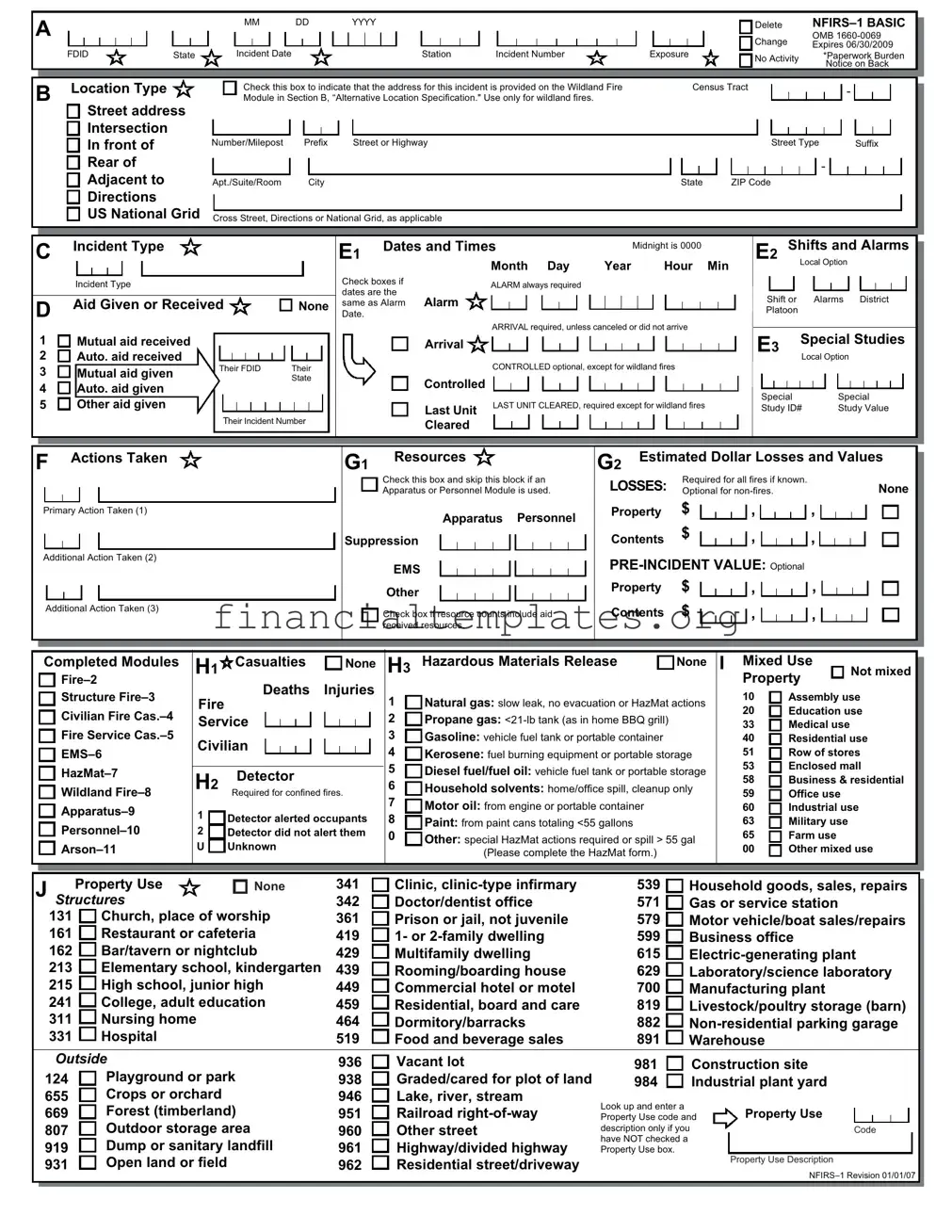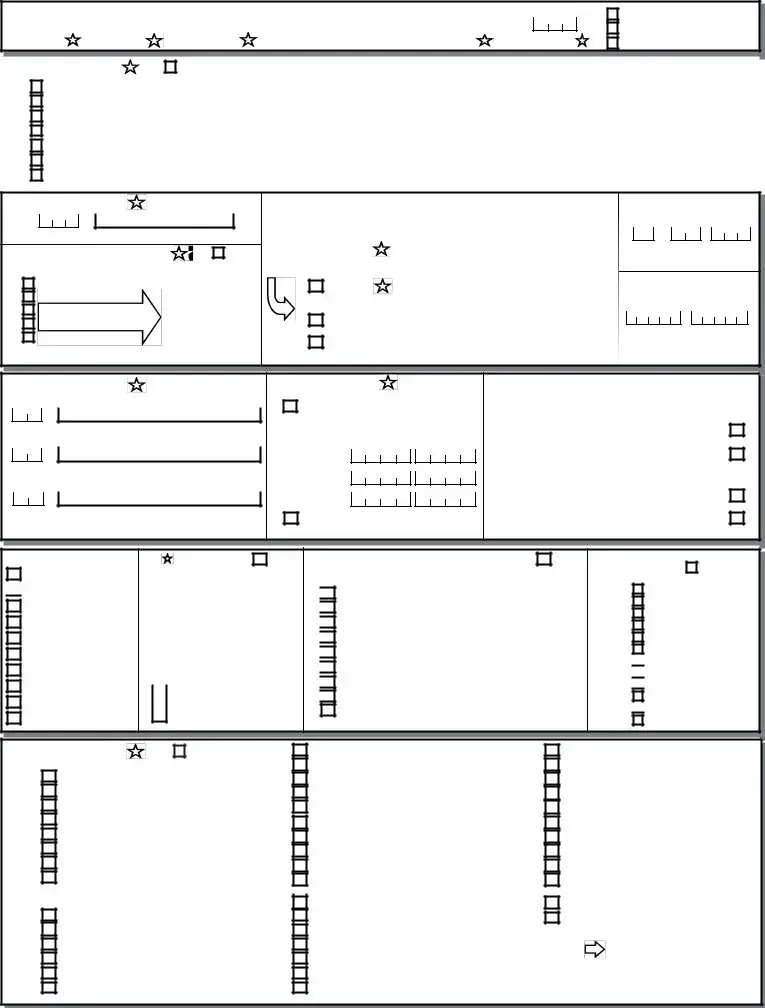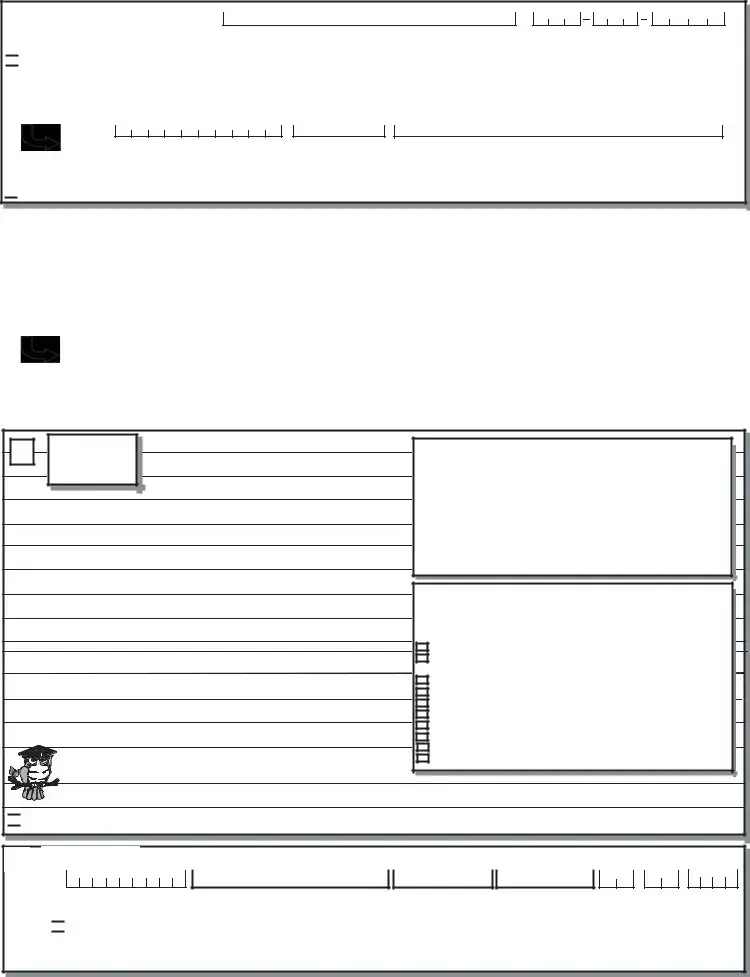The NFIRS form shares similarities with the Incident Command System (ICS) Form 201, Incident Briefing, which is utilized within the Incident Command System framework. Both forms are integral in capturing detailed information about incidents, specifically focusing on the incident's nature, location, resources deployed, and actions taken. While the NFIRS form is specific to fire incidents, the ICS 201 extends its utility to a broader range of emergencies, providing a structured approach for briefing incident commanders and leadership on current incident status and resource allocation. Both documents serve as critical tools for documenting incident specifics and guiding subsequent decision-making processes.
The OSHA Form 300, Log of Work-Related Injuries and Illnesses, and the NFIRS form also have commonalities, primarily in their purposes of recording specific incident data. The OSHA Form 300 is designed to document every work-related injury or illness, capturing details such as the nature of the injury/illness, the severity, and where the incident occurred, similar to how the NFIRS form collects data on fire-related incidents. Both are compliance-driven documents, which play pivotal roles in monitoring and enhancing safety protocols and are utilized by organizations to improve workplace safety and emergency response effectiveness.
The Hazardous Waste Manifest System is akin to the NFIRS form in its function of tracking and documenting specific types of incidents. Where the NFIRS form is dedicated to recording details about fire incidents, the Hazardous Waste Manifest tracks the generation, transportation, and disposal of hazardous waste. Both forms are essential for regulatory compliance and ensuring the safety of public health and the environment by meticulously documenting the handling and outcomes of potentially dangerous substances or incidents.
The Police Report for an investigation closely parallels the NFIRS form in objectives and content. This report captures comprehensive details about criminal incidents, including the individuals involved, the crime's nature, location, and any actions taken by the responding officers. Similarly, the NFIRS form documents fire incidents' specifics, aiming to provide a thorough record to aid in future investigations, regulatory compliance, and strategies to prevent future occurrences. Both forms are instrumental in providing a detailed account of the respective incidents they cover, serving as a foundation for investigative and preventive measures.
The Standard Property Insurance Claim Form shares objectives similar to those of the NFIRS form, with both aimed at documenting incidents crucial for further action and compliance. Property insurance claim forms are used to report damage to insured property, outlining the extent of damage, location, and cause, much like the NFIRS form does for fire incidents. The key purpose of both documents is to provide a structured means of reporting incidents to facilitate further actions, such as investigations, compensations, and implementing measures to prevent future incidents.
The EMS Patient Care Report (PCR) forms a parallel with the NFIRS form in terms of documenting incident specifics with an emphasis on the medical response. While the NFIRS form covers the broader aspects of fire incidents, including casualties, the PCR is focused on documenting every aspect of medical care provided to patients by Emergency Medical Services (EMS) personnel. Both forms are crucial for subsequent review and analysis, helping to inform better practices and policies for emergency responses and patient care during incidents.



 Structure
Structure 
 Business & residential
Business & residential
 Office use
Office use
 Industrial use
Industrial use Farm use
Farm use

 Check this box if same address as incident Location (Section B). Then skip the three duplicate address lines.
Check this box if same address as incident Location (Section B). Then skip the three duplicate address lines. More people involved? Check this box and attach Supplemental Forms
More people involved? Check this box and attach Supplemental Forms  MUST
MUST 
 More remarks? Check this box and attach Supplemental Forms
More remarks? Check this box and attach Supplemental Forms 
